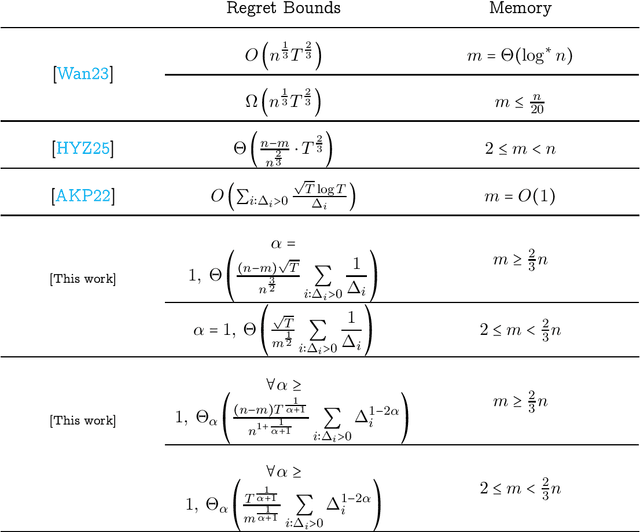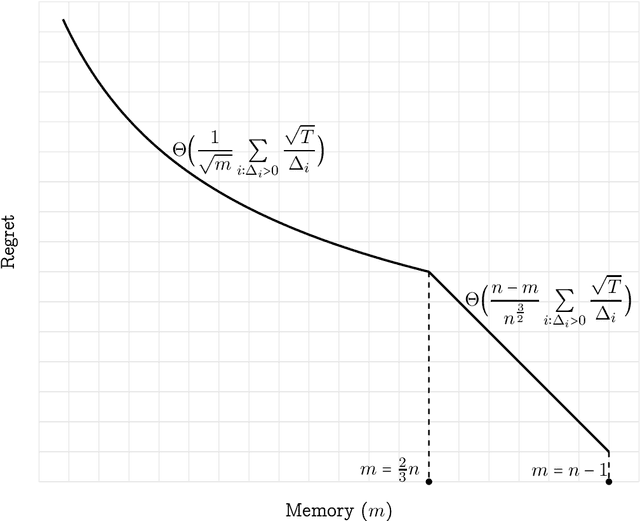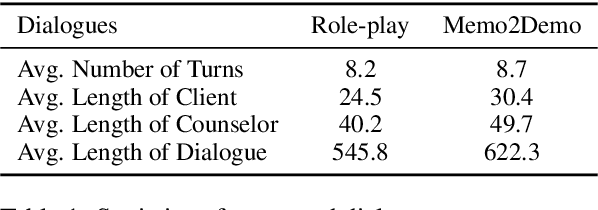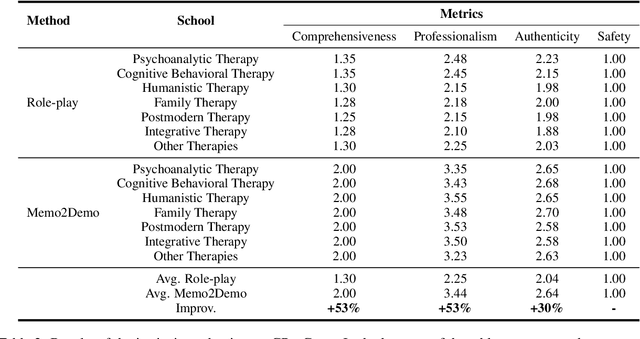Jiahao Zhao
RxSafeBench: Identifying Medication Safety Issues of Large Language Models in Simulated Consultation
Nov 06, 2025Abstract:Numerous medical systems powered by Large Language Models (LLMs) have achieved remarkable progress in diverse healthcare tasks. However, research on their medication safety remains limited due to the lack of real world datasets, constrained by privacy and accessibility issues. Moreover, evaluation of LLMs in realistic clinical consultation settings, particularly regarding medication safety, is still underexplored. To address these gaps, we propose a framework that simulates and evaluates clinical consultations to systematically assess the medication safety capabilities of LLMs. Within this framework, we generate inquiry diagnosis dialogues with embedded medication risks and construct a dedicated medication safety database, RxRisk DB, containing 6,725 contraindications, 28,781 drug interactions, and 14,906 indication-drug pairs. A two-stage filtering strategy ensures clinical realism and professional quality, resulting in the benchmark RxSafeBench with 2,443 high-quality consultation scenarios. We evaluate leading open-source and proprietary LLMs using structured multiple choice questions that test their ability to recommend safe medications under simulated patient contexts. Results show that current LLMs struggle to integrate contraindication and interaction knowledge, especially when risks are implied rather than explicit. Our findings highlight key challenges in ensuring medication safety in LLM-based systems and provide insights into improving reliability through better prompting and task-specific tuning. RxSafeBench offers the first comprehensive benchmark for evaluating medication safety in LLMs, advancing safer and more trustworthy AI-driven clinical decision support.
Jinx: Unlimited LLMs for Probing Alignment Failures
Aug 12, 2025Abstract:Unlimited, or so-called helpful-only language models are trained without safety alignment constraints and never refuse user queries. They are widely used by leading AI companies as internal tools for red teaming and alignment evaluation. For example, if a safety-aligned model produces harmful outputs similar to an unlimited model, this indicates alignment failures that require further attention. Despite their essential role in assessing alignment, such models are not available to the research community. We introduce Jinx, a helpful-only variant of popular open-weight LLMs. Jinx responds to all queries without refusals or safety filtering, while preserving the base model's capabilities in reasoning and instruction following. It provides researchers with an accessible tool for probing alignment failures, evaluating safety boundaries, and systematically studying failure modes in language model safety.
R1-Searcher++: Incentivizing the Dynamic Knowledge Acquisition of LLMs via Reinforcement Learning
May 22, 2025Abstract:Large Language Models (LLMs) are powerful but prone to hallucinations due to static knowledge. Retrieval-Augmented Generation (RAG) helps by injecting external information, but current methods often are costly, generalize poorly, or ignore the internal knowledge of the model. In this paper, we introduce R1-Searcher++, a novel framework designed to train LLMs to adaptively leverage both internal and external knowledge sources. R1-Searcher++ employs a two-stage training strategy: an initial SFT Cold-start phase for preliminary format learning, followed by RL for Dynamic Knowledge Acquisition. The RL stage uses outcome-supervision to encourage exploration, incorporates a reward mechanism for internal knowledge utilization, and integrates a memorization mechanism to continuously assimilate retrieved information, thereby enriching the model's internal knowledge. By leveraging internal knowledge and external search engine, the model continuously improves its capabilities, enabling efficient retrieval-augmented reasoning. Our experiments demonstrate that R1-Searcher++ outperforms previous RAG and reasoning methods and achieves efficient retrieval. The code is available at https://github.com/RUCAIBox/R1-Searcher-plus.
Tight Gap-Dependent Memory-Regret Trade-Off for Single-Pass Streaming Stochastic Multi-Armed Bandits
Mar 04, 2025

Abstract:We study the problem of minimizing gap-dependent regret for single-pass streaming stochastic multi-armed bandits (MAB). In this problem, the $n$ arms are present in a stream, and at most $m<n$ arms and their statistics can be stored in the memory. We establish tight non-asymptotic regret bounds regarding all relevant parameters, including the number of arms $n$, the memory size $m$, the number of rounds $T$ and $(\Delta_i)_{i\in [n]}$ where $\Delta_i$ is the reward mean gap between the best arm and the $i$-th arm. These gaps are not known in advance by the player. Specifically, for any constant $\alpha \ge 1$, we present two algorithms: one applicable for $m\ge \frac{2}{3}n$ with regret at most $O_\alpha\Big(\frac{(n-m)T^{\frac{1}{\alpha + 1}}}{n^{1 + {\frac{1}{\alpha + 1}}}}\displaystyle\sum_{i:\Delta_i > 0}\Delta_i^{1 - 2\alpha}\Big)$ and another applicable for $m<\frac{2}{3}n$ with regret at most $O_\alpha\Big(\frac{T^{\frac{1}{\alpha+1}}}{m^{\frac{1}{\alpha+1}}}\displaystyle\sum_{i:\Delta_i > 0}\Delta_i^{1 - 2\alpha}\Big)$. We also prove matching lower bounds for both cases by showing that for any constant $\alpha\ge 1$ and any $m\leq k < n$, there exists a set of hard instances on which the regret of any algorithm is $\Omega_\alpha\Big(\frac{(k-m+1) T^{\frac{1}{\alpha+1}}}{k^{1 + \frac{1}{\alpha+1}}} \sum_{i:\Delta_i > 0}\Delta_i^{1-2\alpha}\Big)$. This is the first tight gap-dependent regret bound for streaming MAB. Prior to our work, an $O\Big(\sum_{i\colon\Delta>0} \frac{\sqrt{T}\log T}{\Delta_i}\Big)$ upper bound for the special case of $\alpha=1$ and $m=O(1)$ was established by Agarwal, Khanna and Patil (COLT'22). In contrast, our results provide the correct order of regret as $\Theta\Big(\frac{1}{\sqrt{m}}\sum_{i\colon\Delta>0}\frac{\sqrt{T}}{\Delta_i}\Big)$.
Streaming Piano Transcription Based on Consistent Onset and Offset Decoding with Sustain Pedal Detection
Mar 03, 2025Abstract:This paper describes a streaming audio-to-MIDI piano transcription approach that aims to sequentially translate a music signal into a sequence of note onset and offset events. The sequence-to-sequence nature of this task may call for the computationally-intensive transformer model for better performance, which has recently been used for offline transcription benchmarks and could be extended for streaming transcription with causal attention mechanisms. We assume that the performance limitation of this naive approach lies in the decoder. Although time-frequency features useful for onset detection are considerably different from those for offset detection, the single decoder is trained to output a mixed sequence of onset and offset events without guarantee of the correspondence between the onset and offset events of the same note. To overcome this limitation, we propose a streaming encoder-decoder model that uses a convolutional encoder aggregating local acoustic features, followed by an autoregressive Transformer decoder detecting a variable number of onset events and another decoder detecting the offset events for the active pitches with validation of the sustain pedal at each time frame. Experiments using the MAESTRO dataset showed that the proposed streaming method performed comparably with or even better than the state-of-the-art offline methods while significantly reducing the computational cost.
Intelligence Test
Feb 26, 2025Abstract:How does intelligence emerge? We propose that intelligence is not a sudden gift or random occurrence, but rather a necessary trait for species to survive through Natural Selection. If a species passes the test of Natural Selection, it demonstrates the intelligence to survive in nature. Extending this perspective, we introduce Intelligence Test, a method to quantify the intelligence of any subject on any task. Like how species evolve by trial and error, Intelligence Test quantifies intelligence by the number of failed attempts before success. Fewer failures correspond to higher intelligence. When the expectation and variance of failure counts are both finite, it signals the achievement of an autonomous level of intelligence. Using Intelligence Test, we comprehensively evaluate existing AI systems. Our results show that while AI systems achieve a level of autonomy in simple tasks, they are still far from autonomous in more complex tasks, such as vision, search, recommendation, and language. While scaling model size might help, this would come at an astronomical cost. Projections suggest that achieving general autonomy would require unimaginable $10^{26}$ parameters. Even if Moore's Law continuously holds, such a parameter scale would take $70$ years. This staggering cost highlights the complexity of human tasks and the inadequacies of current AI. To further understand this phenomenon, we conduct a theoretical analysis. Our simulations suggest that human tasks possess a criticality property. As a result, autonomy requires a deep understanding of the task's underlying mechanisms. Current AI, however, does not fully grasp these mechanisms and instead relies on superficial mimicry, making it difficult to reach an autonomous level. We believe Intelligence Test can not only guide the future development of AI but also offer profound insights into the intelligence of humans ourselves.
Generating Model Parameters for Controlling: Parameter Diffusion for Controllable Multi-Task Recommendation
Oct 14, 2024



Abstract:Commercial recommender systems face the challenge that task requirements from platforms or users often change dynamically (e.g., varying preferences for accuracy or diversity). Ideally, the model should be re-trained after resetting a new objective function, adapting to these changes in task requirements. However, in practice, the high computational costs associated with retraining make this process impractical for models already deployed to online environments. This raises a new challenging problem: how to efficiently adapt the learning model to different task requirements by controlling model parameters after deployment, without the need for retraining. To address this issue, we propose a novel controllable learning approach via Parameter Diffusion for controllable multi-task Recommendation (PaDiRec), which allows the customization and adaptation of recommendation model parameters to new task requirements without retraining. Specifically, we first obtain the optimized model parameters through adapter tunning based on the feasible task requirements. Then, we utilize the diffusion model as a parameter generator, employing classifier-free guidance in conditional training to learn the distribution of optimized model parameters under various task requirements. Finally, the diffusion model is applied to effectively generate model parameters in a test-time adaptation manner given task requirements. As a model-agnostic approach, PaDiRec can leverage existing recommendation models as backbones to enhance their controllability. Extensive experiments on public datasets and a dataset from a commercial app, indicate that PaDiRec can effectively enhance controllability through efficient model parameter generation. The code is released at https://anonymous.4open.science/r/PaDiRec-DD13.
Low-probability of Intercept/Detect (LPI/LPD) Secure Communications Using Antenna Arrays Employing Rapid Sidelobe Time Modulation
Jun 17, 2024Abstract:We present an electronically-reconfigurable antenna array offering low probability of intercept/detect (LPI/LPD) and secure communications capabilities simultaneously at the physical layer. This antenna array is designed to provide rapidly time-varying sidelobes and a stationary main lobe. By performing rapid sidelobe time modulation (SLTM), the signal transmitted in the undesired directions (i.e., through sidelobes) undergoes spread-spectrum distortion making it more difficult to be detected, intercepted, and deciphered while the signal transmitted in the desired direction (i.e., through the main lobe) is unaffected. Therefore, the intended receiver would not need additional modifications (i.e. encryption keys) to detect and recover the signal. We describe the operating principles of this SLTM array and validate its spread-spectrum SLTM sequence generation in undesired directions through theory, simulations, and experiments. Using a fabricated SLTM prototype operating at X band, we conducted system-level measurements to demonstrate its LPI/LPD, secure communications, and jamming resilience capabilities. The presented method is a physical layer technique, which can bring LPI/LPD capabilities to existing communications systems by simply replacing their antennas with SLTM arrays. This technique can be used independently or in combination with additional coding and signal-processing techniques to achieve further enhancements in LPI/LPD and secure communications.
CPsyCoun: A Report-based Multi-turn Dialogue Reconstruction and Evaluation Framework for Chinese Psychological Counseling
May 26, 2024



Abstract:Using large language models (LLMs) to assist psychological counseling is a significant but challenging task at present. Attempts have been made on improving empathetic conversations or acting as effective assistants in the treatment with LLMs. However, the existing datasets lack consulting knowledge, resulting in LLMs lacking professional consulting competence. Moreover, how to automatically evaluate multi-turn dialogues within the counseling process remains an understudied area. To bridge the gap, we propose CPsyCoun, a report-based multi-turn dialogue reconstruction and evaluation framework for Chinese psychological counseling. To fully exploit psychological counseling reports, a two-phase approach is devised to construct high-quality dialogues while a comprehensive evaluation benchmark is developed for the effective automatic evaluation of multi-turn psychological consultations. Competitive experimental results demonstrate the effectiveness of our proposed framework in psychological counseling. We open-source the datasets and model for future research at https://github.com/CAS-SIAT-XinHai/CPsyCoun
CPsyExam: A Chinese Benchmark for Evaluating Psychology using Examinations
May 16, 2024



Abstract:In this paper, we introduce a novel psychological benchmark, CPsyExam, constructed from questions sourced from Chinese language examinations. CPsyExam is designed to prioritize psychological knowledge and case analysis separately, recognizing the significance of applying psychological knowledge to real-world scenarios. From the pool of 22k questions, we utilize 4k to create the benchmark that offers balanced coverage of subjects and incorporates a diverse range of case analysis techniques.Furthermore, we evaluate a range of existing large language models~(LLMs), spanning from open-sourced to API-based models. Our experiments and analysis demonstrate that CPsyExam serves as an effective benchmark for enhancing the understanding of psychology within LLMs and enables the comparison of LLMs across various granularities.
 Add to Chrome
Add to Chrome Add to Firefox
Add to Firefox Add to Edge
Add to Edge